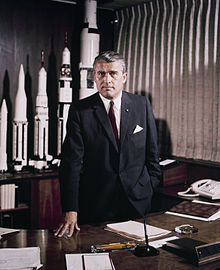User:Rog0009/sandbox
Rog0009/sandbox | |
|---|---|
 Dr. Roger P. Vancour | |
| Born | Roger Paul Vancour February 12, 1922 Oxford, Massachusetts, U.S. |
| Died | April 11, 2012 (aged 90) |
| Nationality | American |
| Education | College of the Holy Cross, B.S.,1943, Boston College, M.S., 1947, Fordham University, Ph.D.,1951 |
| Occupation(s) | physicist, space physics, aerospace engineer, designer of experimental equipment for auroral studies |
| Known for | Auroral Studies |
| Spouse(s) | Alice Y. Trombly (1946–2012), his death |
| Children | Roger P. Vancour, Jr. (b. 1952) Ronald W. Vancour (b. 1957) |
| Parent(s) | Henry A. Vancour (1888–1974) Rosanna E. Fountain (1891–1972) |
| Military career | |
| Allegiance | |
| Service | |
| Years of service | 1943–46 |
| Battles / wars | World War II |
| Other work | Space Physicist, Department of Defense, Air Force Cambridge Research Laboratories, and Air Force Geophysics Laboratory. |
Roger P. Vancour (February 12, 1922 – April 11, 2012) was an American physicist that worked in the Space physics Department of Air Force Cambridge Research Laboratories, at Hanscom Air Force Base, Bedford, Massachusetts.
an American astronomer, cosmologist, astrophysicist, astrobiologist, author, science popularizer, and science communicator in astronomy and other natural sciences. He is best known for his contributions to the scientific research of extraterrestrial life, including experimental demonstration of the production of amino acids from basic chemicals by radiation. Sagan assembled the first physical messages sent
, cosmologist, astrophysicist, astrobiologist, author, science popularizer, and science communicator
Early life
[edit]Inquisitiveness about nature
[edit]Soon after entering elementary school he began to express a strong inquisitiveness about nature. Sagan recalled taking His parents helped nurture his growing interest in science by buying him chemistry sets and reading materials. His interest in space, however, was his primary focus,
High school years
[edit]Sagan had lived in Sagan was a straight-A student but was bored due to unchallenging classes and uninspiring teachers.[1]: 23 His teachers realized this and tried to convince
World War II
[edit]During World War II Sagan's family worried about the fate
Education and scientific career
[edit]He attended the University of Chicago, where he participated in the Ryerson Astronomical Society,[2] received a B.A. degree in self-proclaimed "nothing" with general and
Sagan lectured and did research at Harvard University until 1968, when he moved to Cornell University in Ithaca, New York, after being denied tenure at Harvard. It has been suggested that Sagan was denied tenure in part because of his publicized scientific ad
Sagan was associated with the U.S. space program from its inception. From the 1950s onward, he worked as an advisor to NASA, where one of his duties included briefing the Apollo astronauts before their flights to the Moon. Sagan contributed to many of the robotic spacecraft missions that explored the Solar System, arranging experiments on many of the expeditions. He conceived the idea of adding an unalterable and universal m
Scientific achievements
[edit]Sagan's contributions were central to the discovery of the high surface temperatures of the planet Venus.[3][4] In the early 1960s no one knew for certain the basic conditions of that planet's surface, and Sagan listed the possibilities in a report later depicted for popularization in a Time–Life book, Planets. His own view was that Venus was dry and very hot as opposed to the balmy paradise others had imagined. He had investigated radio emissions from Venus and concluded that there was a surface temperature of 500 °C (900 °F). As a visiting scientist to NASA's Jet Propulsion Laboratory, he contributed to the first Mariner missions to Venus, working on the design and management of the project. Mariner 2 confirmed his conclusions on the surface conditions of Venus in 1962.
Sagan wrote frequently about religion and the relationship between religion and science, expressing his skepticism about the conventional conceptualization of God as a sapient being. For example:
Some people think God is an outsized, light-skinned male with a long white beard, sitting on a throne somewhere up there in the sky,
Sagan also commented on Christianity, stating "My long-time view about Christianity is that it represents an amalgam of two seemingly immiscible parts, the religion of Jesus and the religion of Paul. Thomas Jefferson attempted to excise the Pauline parts of the New Testament. There wasn't much left when he was done, but it was an inspiring document."[5]
Regarding the relationship between spirituality and science, Sagan stated: "Science is not only compatible with spirituality; it is a profound source of spirituality. When we recognize our place in an immensity of light-years and in the passage of ages, when we grasp the intricacy, beauty, and subtlety of life, then that soaring feeling, that sense of elation and humility combined, is surely spiritual.
/carl_sagans_life_and_legacy_as_scientist_teacher_and_skeptic "Carl Sagan's Life and Legacy as Scientist, Teacher, and Skeptic"], by David Morrison, Committee for Skeptical Inquiry
- "A Tribute to Carl Sagan: Our Place in the Universe", by Bill Nye, The Skeptics Society
- Sagan Medal for Excellence in Public Communication in Planetary Science, presented by the American Astronomical Society's Division for Planetary Sciences (AAS/DPS)
- Rog0009/sandbox at Find a Grave
- ^ Cite error: The named reference
Davidsonwas invoked but never defined (see the help page).- ^ "Ryerson Astronomical Society". Ryerson Astronomical Society (RAS). University of Chicago Department of Astronomy and Astrophysics. Retrieved August 22, 2012.
- ^ Cite error: The named reference
surftempwas invoked but never defined (see the help page).- ^ Pierrehumbert, Raymond T. (2010). Principles of Planetary Climate. Cambridge University Press. p. 202. ISBN 978-1-139-49506-6. Extract of page 202
- ^ Schei, Kenneth A. (1996). An Atheist for Jesus. Synthesis. ISBN 0-926491-01-6.


